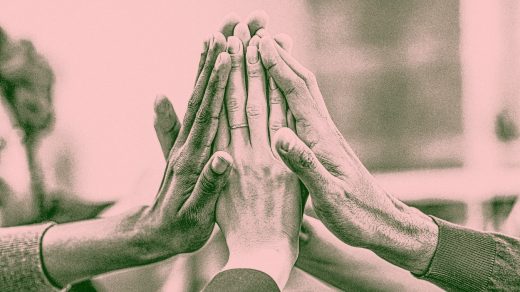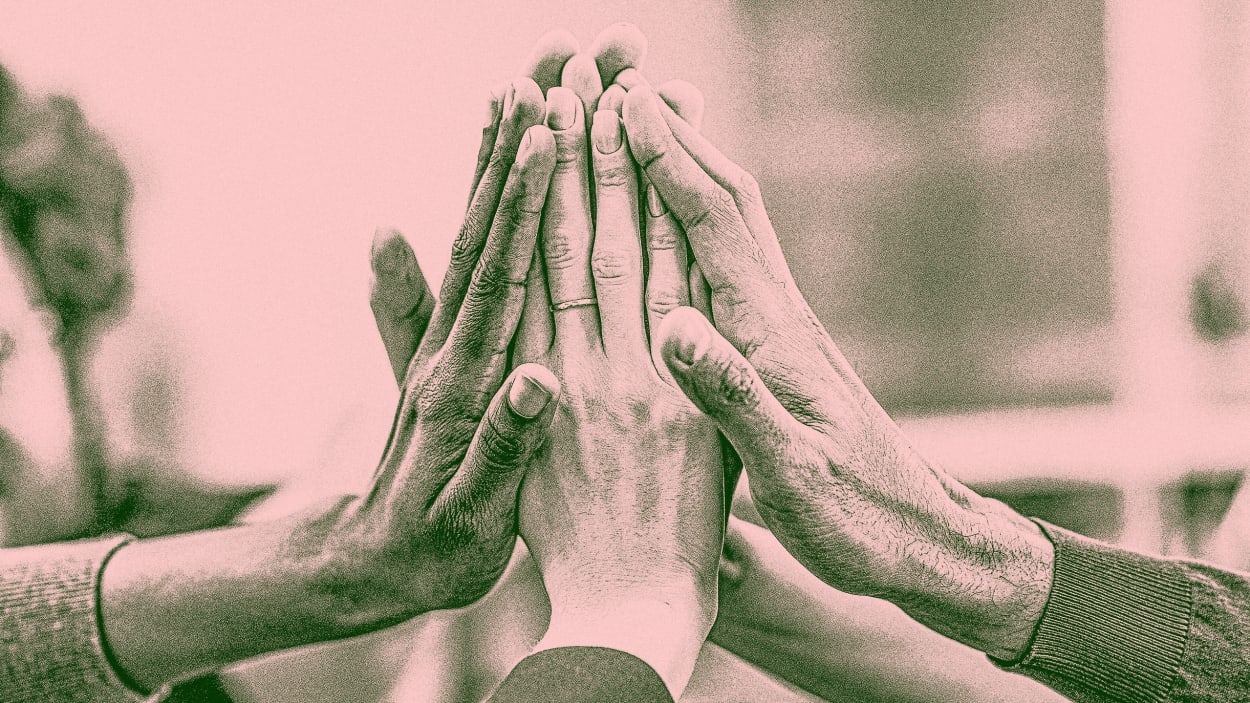3 ways to foster a sense of community at work
By Jennifer Gendron
Most people are social beings and need human connection and community to thrive. We’re shaped by our social environments and studies show that our well-being depends on our connections to others. And while our individual needs and preferences around social interactions fluctuate, varying from person to person and from one season of life to the next, I firmly believe that feeling like we’re part of something bigger than ourselves is a net positive. Feeling connected can provide a sense of belonging and shared purpose—both of which are shown to be key ingredients in our long-term well-being and happiness.
Although I have many introverted tendencies, I am at my best when I know I have the love and support of those around me. After all, community is that “something special” in so many scenarios. It can be a great unifier and a true changemaker. Community is what brings my teams together—not just to troubleshoot strategy and analyze market feedback, but also to laugh and make wild guesses when we don’t know the answers to the final round of questions during our monthly trivia break. It’s what happens when parents, teachers, and school administrators come together to fundraise, problem solve, and make a positive impact for our kids. For me, community is a big part of living a meaningful life—connecting and working together to contribute to a greater purpose beyond ourselves.
Unfortunately, evolving ways of working and living have made strengthening relationships and fostering community more challenging than ever before, leaving many of us feeling lonely. Globally, more than half of workers (55%) say they experience feelings of loneliness on a weekly basis and an even higher percentage (79%) say they think their coworkers feel this way weekly. The gap between these two numbers indicates that there is a stigma surrounding loneliness. And this stigma is keeping people from being more honest about their own feelings around relationships, socialization, and belonging.
The stigma of loneliness
Somehow, despite the universality of loneliness, we’re embarrassed to talk about it. As a former licensed mental health professional, I saw this unfold with people of all ages. But as a parent, I have seen that my kids thrive the most when they have a strong connection to family and their friend group. Oftentimes we may respond by acting like or saying we aren’t impacted by not being included. But the fact of the matter is, feeling like we’re alone or like we don’t belong—in professional and personal settings—hurts. In fact, loneliness has such a strong impact on mental and physical health it’s been declared a public health epidemic by the U.S. Surgeon General.
On the other hand, studies show a sense of community (one of the top remedies to loneliness) helps employees thrive inside and outside of work. People who feel a sense of community at work are also 55% more engaged and 66% more likely to stay with their organization. As a people manager, I’m particularly aware of the role I play in creating a safe environment that fosters connection for my employees. While I’m not solely responsible for our community—community is definitely a group project—I know that my position as a leader means that how I communicate and interact with my teams and the wider organization serve as an example. The pandemic, and shifting ways of working, have made this more challenging and complicated. However it needs to remain a focus for leaders and organizations alike.
Creating a sense of community and connection is an essential part of how I strive to care for my team and their mental health. Through my words and my actions, I am intentional about showing my team that our workplace is a psychologically safe space where there is room for us all to connect, belong, and work towards a shared purpose.
Here are three ways I’ve worked to foster connection and community at my organization.
1. Solve problems as a team
In a working environment where it’s safe to make mistakes, there’s nothing quite like a crisis—big or small—to forge stronger relationships. By taking a teamwork-driven approach to resolving problems as they arise, you’re doing two important things. First, you’re showing your employees that making mistakes is inevitable, and that it’s what you do next that matters most. Second, you’re giving them the opportunity to get to know each other under pressure and grow together through challenging situations, which can strengthen working relationships.
Just a side note for the fellow child wranglers out there: I’ve also found this to be an effective strategy with my sons—once the initial squabble is over, working together to solve a problem brings out the best in both of them.
2. Have fun together
As my team at work and my family know—I’m very serious about getting the work done, but I’m also serious about fun. One of the ways I bring fun to my organization is by celebrating wins (and efforts), big and small. An example of this is our star of the month award—where team members nominate their coworkers based on their recent work and how they embody our company values.
Another way I make room for fun is by planning nonwork activities for us to do as a team, in-person and virtually. This doesn’t have to cost a lot of time or money—especially if you play to your employees’ strengths and interests. A favorite in the commercial department is our monthly Jeopardy-style trivia, but the possibilities are endless. Another example is the scavenger hunt at our last global gathering that took our teams all around Barcelona.
3. Save space for chitchat
Chitchat, or as I like to call it, connecting and checking in, often gets bad press. However mistakenly, people think it’s a waste of their time, and opt out because they feel too busy, or don’t have anything “interesting enough” to share. But I’d argue that making time for even just a few minutes of informal conversation at the start or finish of your calls makes all the difference in how connected the people on your team feel, and the data supports me on this point.
Research from MIT shows that this type of interaction has quantifiable benefits—with workers getting through their tasks more quickly, with less stress, and with good results. So-called small talk has been shown to contribute to employees’ positive emotions, promote well-being, and foster good workplace citizenship. My own personal experience tells me that these interactions have the potential to be meaningful and uplifting moments during the workday, helping us to feel seen and appreciated in the workplace.
In the workplace, we talk a lot about opening doors—but I often think we’d be better off talking about building stronger bridges. Solid relationships and a grounded sense of community are key ingredients to sustainable business success. Our relationships with our coworkers and leadership teams can make working together psychologically safer, easier, more productive, and more enjoyable . . . or they can do the opposite. Because I care about my team, I make the effort to tip the balance towards safety and fun.
Jennifer Gendron is the global chief commercial officer for Koa Health.
(11)



